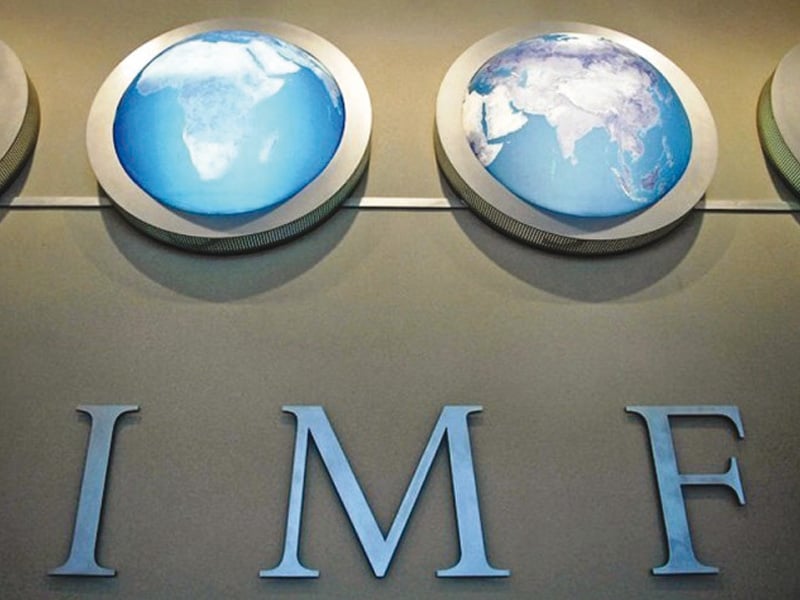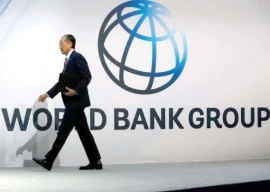
Pakistan’s economy could grow by only 1%, inflation may cross above 10% and rate of unemployment will further jump by the end of this fiscal year, revealed the World Economic Outlook (WEO) report that the International Monetary Fund released on Tuesday.
The WEO report 2020 this year is titled “a long and difficult ascent”, which said that advanced economies were recovering from the adverse effects of the Great Lockdown faster than earlier projected.
Pakistan’s economy, which in the last fiscal year contracted by 0.4%, is projected to grow by 1% in this fiscal year 2020-21, the WEO report said.
The 1% growth rate is less than half of the official target of 2.1% and broadly in line with the projections made by the World Bank.
The WEO noted that inflation in Pakistan could be 10.2% on an annualised basis, which by 2025 is expected to remain around 8.6% and the unemployment rate, which till this fiscal year was 4.5% may further jump to 5.1%.
The IMF projected over 13.3% increase in unemployment in Pakistan within a year.
The IMF report projections suggest that Pakistan is in stagflation – a condition in which the economic growth rate is slow while unemployment and prices of goods and services are high.
The pace of inflation is skyrocketing at a time when the economic activity, both in the formal as well as informal sectors, is slowing down, which has made it difficult for the people to cope with the situation.
But the Ministry of Finance spokesperson differed that Pakistan was officially passing through stagflation.
Although the annual headline inflation rate is over 9%, the core inflation is still around 5.5%, the spokesperson said.
The core inflation is measured by excluding the impact of food and energy prices – the two items that have been constantly on rise.
Prime Minister Imran Khan is very much concerned about rising food prices and has taken strong notice of not controlling the rates even in cases where the costs could have been brought down through administrative measures, the spokesperson said.
There is double-digit food inflation in Pakistan due to shortage of essential food items.
The Pakistan Tehreek-e-Insaf government can immediately address the issue of supplies by allowing imports of essential food items from India.
The government had severed trade relations with India after the neighbouring country unilaterally changed the status of Indian Illegally Occupied Jammu and Kashmir. However, still Pakistan is importing few commodities from India.
The imports from India stood at $31.5 million during July-August period of this fiscal year, according to the State Bank of Pakistan.
The IMF report said that remittance flows contracted sharply during the early lockdown period but showed signs of recovery.
“The risk of a decline in payments and transfers from migrant workers back to their home countries is very significant, particularly for such countries as Bangladesh, Egypt, Guatemala, Pakistan, the Philippines,” according to the report.
The WEO stated that more than one million lives had been lost to Covid-19 since the start of the year and the toll continued to rise.
Close to 90 million people are expected to fall into extreme deprivation this year.
“These are difficult times, yet there are some reasons to be hopeful,” the report said.
Testing has been ramped up, treatments are improving, and vaccine trials have proceeded at an unprecedented pace, with some now in the final stage of testing, it added.
The report further stated that the recent data suggested that many economies had started to recover at a faster pace than anticipated after reopening from the Great Lockdown.
“We are projecting a somewhat less severe though still deep recession in 2020, relative to June forecast.”
The report observed that the revision was driven by second quarter GDP outturns in large advanced economies, which were not as negative as had been projected.
China’s return to growth, which was stronger than expected, and signs of a more rapid recovery in the third quarter, it said.
While the global economy is coming back, the ascent will likely be long, uneven, and uncertain, the IMF maintained.
But it observed that prospects had worsened significantly in some emerging markets and developing economies where infections were increasing rapidly.
The IMF also released the Global Financial Stability report, which showed that Pakistan’s External debt service through the end of 2021 as percentage of foreign currency reserves 102%.
COMMENTS (1)
Comments are moderated and generally will be posted if they are on-topic and not abusive.
For more information, please see our Comments FAQ




1731975305-0/Untitled-design-(40)1731975305-0-165x106.webp)
1731975060-0/Untitled-design-(39)1731975060-0-165x106.webp)




1730379446-0/WhatsApp-Image-2024-10-31-at-17-56-13-(1)1730379446-0-270x192.webp)







Dismal situation. Govt's priority should be welfare. Country with five major rivers suffers from food production shortage is difficult to understand. Govt should re prioritize its programs. I read that the Govt is happy about re election to UN Human Rights Forum. What about the happiness of its citizens. Are not they its priority? Decades after decades same old economic story in Pakistan. Economic issues should be above emotional issues. When will the population understand and elect leaders who will make the country counted among successful nations.